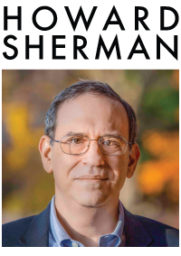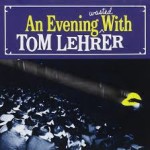“We really pride ourselves on putting so much out for actors,” said the artistic director, who founded and has run the small non-Equity theatre company for more than a decade. “I’ve had my own experiences, both good and bad, that informed this company. We put everything out there so the actors can make an informed decision.”
It all sounds very positive, very transparent, however the artistic director was responding to a series of specific questions posed about hiring and employment policies, which were spelled out in detail in their company’s online materials, in a questionnaire provided to actors in advance of auditions, and in a contract offered to an actor. The inquiry was not prompted by any outreach from a past member of the company with an axe to grind.
The company’s practices in some cases are seemingly overcontrolling and unenforceable, in other cases contrary to employment law. Regardless of how open the company is, they’re not fostering a safe and creatively productive environment for everyone involved. First and foremost they are protecting their own interests.
The materials obtained contained so much questionable language, and suggests fear on the part of the company’s leadership, that it does raise the question of how actors may be treated when a collective bargaining agreement is not in place. That’s not to say that all companies should immediately strike up agreements with Actors Equity; non-Equity theatre is an essential part of the theatrical environment where young actors, perhaps actors still in school, can get practical experience on stage and where small communities can benefit from live performance. But they need to be making theatre in an environment that is safe and fulfilling.
* * *
The company in question is quite small, claiming roughly a $30,000 annual operating budget. They charge nothing for performances, although they may pass the hat. They perform in a significantly rural part of their state and travel to different towns for their shows. They claim an honor from their state’s governor, and in the brochure used to attract performers, namechecks numerous Shakespeare festivals around the US as having hired their alumni.
While calling themselves professional, half their season is performed by actors who pay a non-refundable $800 (and a $100 security deposit) for the right to perform. The other half of the season, actors are hired for $800 for a total of four weeks. Housing is provided; meals or per diems are not.
Here are some examples of their employment provisions, first from their agreement with the actors paying to participate, with observations notated:
- “Artist understands that they participate in all activities associated with company at their own risk, indemnifying and holding harmless theatre group.” This is not an acceptable practice in any employment situation, or frankly even for volunteers. If the actors are paying to work with the company, or if they’re paid by the company, the company should maintain full liability insurance as well as workers compensation insurance, and should produce proof of such insurance on request.
- The term of the agreement is “Immediately to Final Check Out Day, July 10, 2016.” The term should be from first day of work to last day of work. The company has no jurisdiction over any actor from the moment the contract is signed.
- While housing is provided, there should be “no excess housing electrical/water usage fees ($200+ dollars for the month.” As housing is shared, it is not possible to determine who might be responsible for such overages, especially with some staff living in that housing. No actor should be held liable. This is simply part of housing expense.
- “There are no understudies. If Artist should fail to honor the terms of this agreement, they may be held fiscally liable if, in doing so, additional costs are borne by the organization as a result.” This suggests that if an actor is ill and cannot perform for one or more performances, they bear replacement costs. The same would be true if an actor quit. These costs would be levied on actors who have already paid for the right to be there.
- “Artist gives a release/permission in perpetuity for their likeness and name to be used to promote the Organization, for social media, and agrees to participate in public relations/community outreach events.” The terms for use of likeness and name are unnecessarily broad and vague; it suggests that if an actor becomes well-known, the company can ostentatiously use them in all marketing. Additionally, since there are no stated work hours to begin with, how can actors be compelled to take part in activities beyond their acting work?
- “Artist understands company is a ‘no smoking/no alcohol at any time’ company (even for those over 21).” While an employer can proscribe such behavior during work hours and on company property, they have no right to police people’s personal habits 24/7 for the term of an agreement.
- While there is no reference to workday or workweek in any of the material obtained, the company should make clear that while working with them may be rigorous, and exceed the provisions of most Equity agreements, they should expect a certain amount of guaranteed time for sleep and some partial or full days off in a one-month period.
The company also has a ‘Code of Ethics,’ which is part of their agreement. Among its points, again with annotation:
- “I will: accept the director’s direction in the spirit in which it is given….I will respect that I am part of their vision for the show….I will forego the gratification of ego.” While not illegal, this has nothing to do with ethics. This is actors being told to do exactly what the director tells them without questioning. It seems detrimental to the development of young talent.
- “I will not: Disclose to anyone outside of the Company any Company business including (but not limited to) matters of a fiscal, emotional and/or private nature, as well as what is said or goes on in Company meetings, gatherings and rehearsals.” Questionable in almost any situation, when people are paying a fee to be part of the company, this manner of non-disclosure is inappropriate. What are “matters of an emotional nature” and is the actor supposed to not ever discuss their feelings about their work while working with the company?
- “I will not: Foment an element of ill will by displays of temper, complaining, negativity, foul language, yelling, verbal or physical abuse, gossip or other behavior that may be construed as detrimental to Company morale and to never be anything but positive, polite and friendly to audience members, VIP’s, press, volunteers, and sponsors. I shall inspire the public to respect me and my craft through graciousness in accepting both praise and constructive criticism.” The first portion approaches the controlling nature of social engineering and is probably unenforceable. It raises the question of why the company must proscribe such behaviors as “negativity” and “gossip.” Physical abuse is already illegal.
- “I will not: Publish company business of any kind via electronic or other means, in perpetuity. (i.e: youtube, blogging, social network sites, email, printed materials, etc.).” Again, non-disclosure language that is unnecessarily and unenforceably broad. It’s unlikely an actor would be privy to business information that rises to the level of warranting such confidentiality. This could be construed as an attempt to prohibit all social media activity in connection with an actor’s time with the company.
- “I will not: Discuss or reveal the existence of this agreement with anyone outside the Company.” If you’re afraid people might see your contract terms, then you know there’s something wrong with them. Fix the terms rather than trying to hide your contract from scrutiny.
Finally, from the audition questionnaire:
- “List Daily Medications. Do you have any medical/physical conditions? If yes, describe. Are you currently under psychiatric care/counseling.” Regardless of whether people are paying to participate or being paid, regardless of whether this company is defined as professional or amateur, this kind of question is illegal. Aside from asking for the disclosure of confidential information to which the company has no right, it can be the foundation of discrimination. Only after engaging an actor may the company inquire as to whether an actor has any special requirements of which the company may be called upon to assist, or at least be aware. But disclosure is at the discretion of the actor, except in such cases where a condition would prohibit an actor from fulfilling bona fide occupational requirements, which should be spelled out in advance casting materials.
* * *
The company under discussion holds its auditions at the annual Straw Hat Auditions, held in New York in March. Many non-Equity companies use the Straw Hat Auditions as a means of finding actors for their seasons (as well as staff), but the website of the Straw Hats is fairly enigmatic. E-mails were sent to the two addresses provided on the site, as no phone number appeared. The following questions were posed:
- How many theatres were at this year’s auditions?
- Presumably the theatres pay a fee to participate in the auditions. is that so? If yes, is the rate they pay something that is publicly published, or would you be willing to share it?
- Do you have any criteria for the theatres that participate (beyond being Non-Equity companies)?
- Are the auditions conducted as a commercial or not-for-profit enterprise?
No response was received. There is a clear need for more transparency about who operates the Straw Hat Auditions, the manner in which they accept participating companies, and whether they undertake to verify the employment practices of the companies they are essentially serving as agents.
* * *
It is hard not to be sympathetic to a company that brings theatre to an underserved area, to a theatre that says it ceased charging admission as a tribute to an alumnus of their summer camp who died in service in Afghanistan. It is hard not to appreciate the efforts of any producer scraping by on a shoestring, that says their goal is to do good in their community.
But it’s also hard not to feel concern for young actors, eager for any opportunity to get on stage, who may not have the knowledge or even sense to understand when they’re agreeing to substandard terms and conditions and even putting themselves at risk in order to build a resume. All producers, commercial or not for profit, professional or amateur, should first and foremost treat artists with care and professionalism, and insure that their workplace rules and practices place safety above all else. That holds no matter the size of the budget, or even the lack of one.
So this annotated list is offered not simply to call out the behavior of a single company (indeed it is not even a complete accounting of the issues in the material obtained), but to raise awareness of the kind of language that companies may employ, and which artists and indeed staffs should look out for. Many people in the theatre have funny stories about exhaustive hours and risky practices they experienced early in their careers, but with every generation the field should be trying to do better. Just as the medical field has done away with days upon days of on-call work for young residents, theatre cannot sustain itself, even at its most rudimentary and well-meaning level, by saying that if it was OK then, it’s OK now.
Fixing the contractual language above, and the intent behind it, is not particularly expensive; it can surely be put in place for this coming summer season. The artistic director has already made assurances that the medical questions will be withdrawn. The company in question, and its artistic director have not been named throughout because this is not a hit piece, not a “gotcha” piece, but counsel to a company and to anyone who is going to be acting in non-Equity summer stock in the coming months, or employing people as staff or interns.
So as not to be coy, so as not to be accused of creating a straw man and inventing possible scenarios just to raise issues, the company here is incorporated as a 501(c)(3) as PLAYAH in New Hampshire, and does business as Shakespeare in the Valley. This piece should not be an excuse to declare open season on them online and in social media (as was the case with Words Players Theatre almost a year ago), but only to hold them to reasonable professional and legal standards, and to make other companies with comparable provisions aware that non-Equity and summer stock must never be synonyms for non-professional, unfair, or unsafe.
* * *
The Arts Integrity Initiative will monitor this particular situation over the coming 15 months, and invites confidential communications and inquiries from artists, staff and interns not covered by collective bargaining agreements who have concerns about the legality and safety of their employment in the arts.



 Online or in print, headlines are meant to be grabbers. Just this week, I was taken aback by, and simply had to read, The Independent’s “Radioactive wild boars rampaging around Fukushima nuclear site.” Honestly – how could I resist? A great headline need not always have a pun, such as the New York Daily News’s declaration against gun violence, “God Isn’t Fixing This.” Of course the classic of the genre is the New York Post’s “Headless Body in Topless Bar.”
Online or in print, headlines are meant to be grabbers. Just this week, I was taken aback by, and simply had to read, The Independent’s “Radioactive wild boars rampaging around Fukushima nuclear site.” Honestly – how could I resist? A great headline need not always have a pun, such as the New York Daily News’s declaration against gun violence, “God Isn’t Fixing This.” Of course the classic of the genre is the New York Post’s “Headless Body in Topless Bar.” My memory of the moment is quite vivid, if inevitably inexact. It happened 41 years ago, in the early afternoon, in Mrs. Winkler’s seventh grade science class at Amity Junior High School, as we were doing a “unit” on Ecology. In order to brighten our study of the physical environment, Mrs. Winkler announced one day at the start of class that she wanted to play us a song, and proceeded to put a black vinyl disc on the industrial weight turntable, the cover of which doubled as a speaker. The song she played was a savagely funny cri de coeur about how America’s cities and resources had been ruined by
My memory of the moment is quite vivid, if inevitably inexact. It happened 41 years ago, in the early afternoon, in Mrs. Winkler’s seventh grade science class at Amity Junior High School, as we were doing a “unit” on Ecology. In order to brighten our study of the physical environment, Mrs. Winkler announced one day at the start of class that she wanted to play us a song, and proceeded to put a black vinyl disc on the industrial weight turntable, the cover of which doubled as a speaker. The song she played was a savagely funny cri de coeur about how America’s cities and resources had been ruined by  Not long thereafter, at a garage sale, I would discover a 10 inch, 33 rpm record, “Songs by Tom Lehrer” (on Lehrer Records), which I immediately seized and paid, I imagine, 25 cents to possess. Lehrer joined
Not long thereafter, at a garage sale, I would discover a 10 inch, 33 rpm record, “Songs by Tom Lehrer” (on Lehrer Records), which I immediately seized and paid, I imagine, 25 cents to possess. Lehrer joined  While Lehrer was a genuinely formative influence, who is rarely far from my mind, I think of him specially today because April 9, 2016 marks his 88th birthday. With Sherman gone for than 40 years and Freberg having passed just last year, Lehrer is the last surviving member of my own sung comedy superteam, and while it’s quite clear that there is nothing Lehrer would like less than to be celebrated for work he largely stopped doing 50 years ago (
While Lehrer was a genuinely formative influence, who is rarely far from my mind, I think of him specially today because April 9, 2016 marks his 88th birthday. With Sherman gone for than 40 years and Freberg having passed just last year, Lehrer is the last surviving member of my own sung comedy superteam, and while it’s quite clear that there is nothing Lehrer would like less than to be celebrated for work he largely stopped doing 50 years ago ( In any event, to the dismay of fans of funny, topical songs, Lehrer refocused himself on teaching. The result for comedy geeks was that he became, almost, our J.D. Salinger. Although he hid in plain sight, his students knew better than to discuss his performing fame; though almost no new work appeared, it was clear that he had not shunned his piano and verbal repartee, as the occasional song slipped out, or the odd public appearance. He gave
In any event, to the dismay of fans of funny, topical songs, Lehrer refocused himself on teaching. The result for comedy geeks was that he became, almost, our J.D. Salinger. Although he hid in plain sight, his students knew better than to discuss his performing fame; though almost no new work appeared, it was clear that he had not shunned his piano and verbal repartee, as the occasional song slipped out, or the odd public appearance. He gave  Not all of Lehrer’s material still plays today: in this era when space exploration has been minimized, a song about
Not all of Lehrer’s material still plays today: in this era when space exploration has been minimized, a song about 














